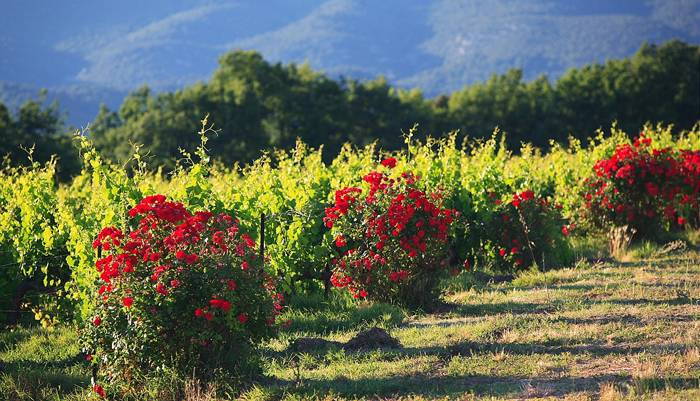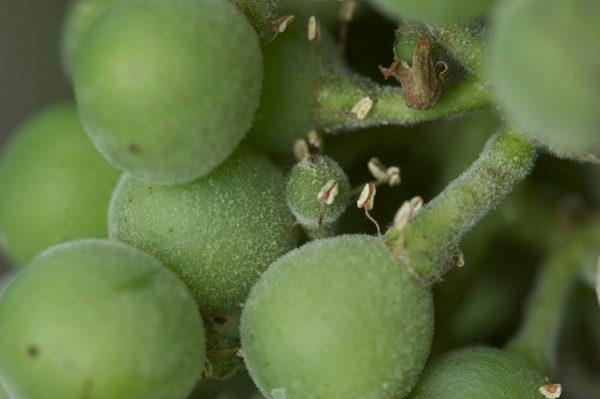
If you’ve visited a vineyard in spring or summer, you may have seen rosebushes planted at the end of the row of vines and wondered why. Read on and we’ll answer this question for you as rosebushes are planted among the vines to be more than just pleasing on the eye.
Aside from looking splendid and bringing colour to a vineyard, rosebushes can be a winemaker’s great friend.
An early warning system
Despite their different appearances, vines and rosebushes have several things in common. A discovery many centuries ago led winemakers to use rosebushes as an early warning system. Roses and vines can be susceptible to the same diseases such as powdery mildew that can have disastrous effects on a winemaker’s crop. Roses are particularly sensitive to powdery mildew and are often the first plant to become infected. Rosebushes around the perimeter of a vineyard thus keep the winemaker alert to the infiltration of this terrible disease, taking the necessary action to save the crop before disease spreads.
Powdery mildew is one of the most devastating diseases for the vine and no vineyard in France is safe from an outbreak. Humidity helps the disease spread and one of the signs of an infected vine is white felting on the foliage and grapes as you can see in the example below.

Help for the horses
Another reason for the presence of roses harks back to the days when horses and oxen were commonly used to plough the vineyards. Rosebushes at the end helped the animals navigate the vine rows. Attracted by the bright colours of the petals, the animals knew this to be the end of the row. The thorns also prevented them from cutting corners when they reached the end of a row and damaging the vines.
See all organic and biodynamic wines currently for sale on iDealwine



